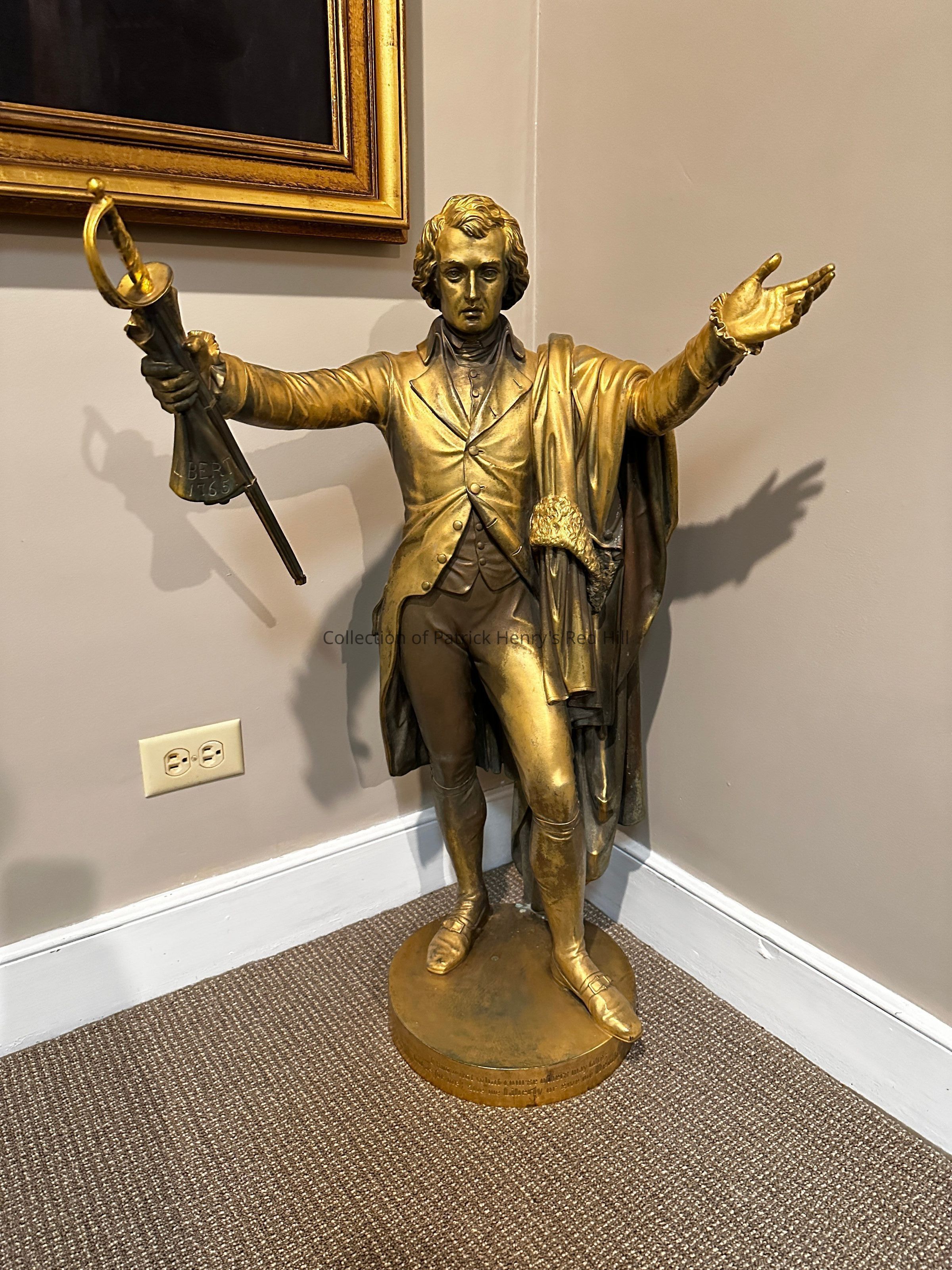Notes
This full-body statue of Patrick Henry is a smaller-scale replica of the original statue, which is part of the Virginia Washington Monument in Richmond.
Designed by Thomas Crawford, a Rome-based sculptor from New York, the monument was commissioned by the Virginia General Assembly, funded by citizens and investments, and built from 1850 to 1869. It features a statue of George Washington atop a horse at the central highest point, surrounded by six other bronze figures: Patrick Henry, George Mason, John Marshall, Andrew Lewis, Thomas Nelson, and Thomas Jefferson. Six other allegorical figures at the founders' feet complete the star, representing Colonial Times, the Revolution, Independence, the Bill of Rights, Finance, and Justice.
This replica was probably made in the late 19th or early 20th century by an unknown maker. It is gilded with gilt-bronze known as ormolu. Ormolu is the gilding technique of applying finely ground, high-carat gold-mercury amalgam to a type of metal. The manufacture of true ormolu employs a process known as mercury-gilding or fire-gilding, in which a solution of mercuric nitrate is applied to a piece of copper, brass, or bronze, followed by the application of an amalgam of gold and mercury. The item is then exposed to extreme heat until the mercury vaporizes, leaving the gold to adhere to the metal object. The French refer to this technique as "bronze doré"; in English, it is known as "gilt bronze". This process has generally been supplanted by the electroplating of gold over a nickel substrate, which is more economical and less dangerous.
An unused bolt in the center of the base indicates that the statue was once connected to a larger base; however, exactly what that base was is unknown.
On May 15, 1962, Sydnor Barksdale "S. B." Penick Jr. (1882–1953) contacted the Patrick Henry Memorial Foundation to inquire if it would be interested in receiving the statue as a donation. S. B. Penick Jr. was a 2nd great-grandson of Patrick Henry. He says his father purchased it sometime in the 1940s from an antique store in Cincinnati, Ohio. He notes that there may have been records about the statue, but that they could not be found. Penick does assert the statue is one of only two such statues cast.
In his reply on May 17, 1962, Foundation President James Easley accepted the donation of the statue and hoped to place it "at some suitable position on the grounds." It is assumed that the statue arrived at Red Hill shortly after this exchange. However, with no formal curatorial system in place yet, no accession records were created, and the statue was not documented as part of the museum collection.
It is not known where the statue was located at Red Hill, but it can be assumed that it was moved to the Patrick Henry Boys Plantation shortly after. The statue remained at the Boys Plantation until it was donated to the Foundation on July 17, 2023, by Patrick Henry Family Services (formerly the Patrick Henry Boys Plantation).
